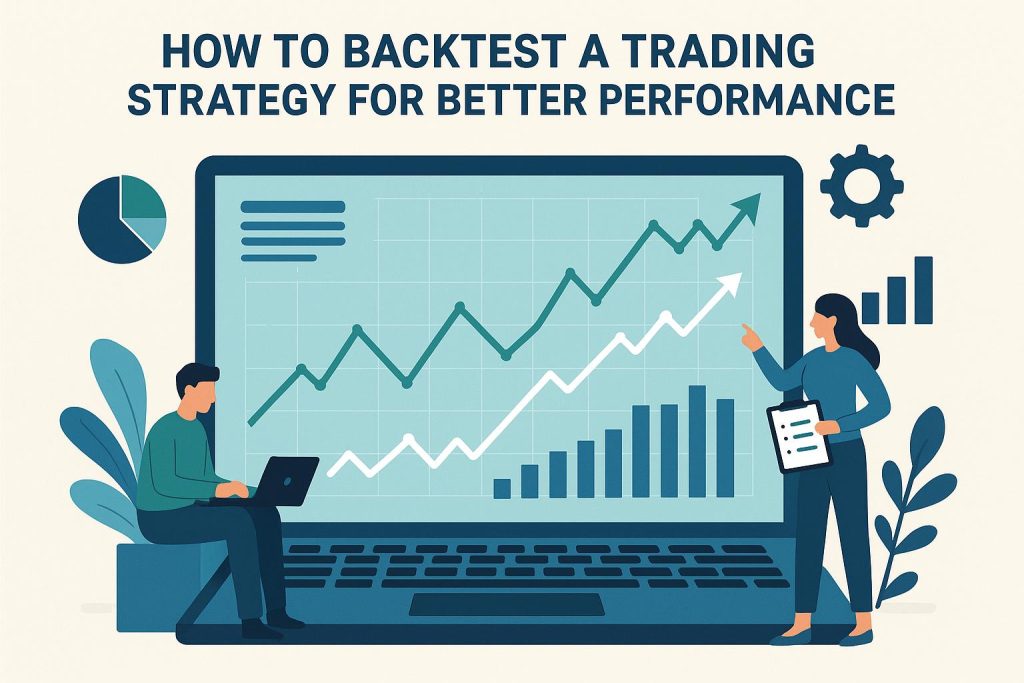
How to Backtest a Trading Strategy for Better Performance
Written on October 9, 2025 By admin in Uncategorized
Understanding Backtesting in Trading
Backtesting is a cornerstone in the realm of trading, acting as a fundamental process for those seeking to craft and validate effective trading strategies. This method involves the application of a trading strategy against historical data, which aids in assessing its viability and potential effectiveness. The primary objective of backtesting lies in allowing traders to evaluate their strategies without exposing actual capital to the unpredictable dynamics of live markets. By replicating trades on past data, traders are in a position to discern the inherent strengths and weaknesses of their strategies, enabling a more structured and informed approach to trading.
Importance of Backtesting
The significance of backtesting in trading cannot be overstated. It offers essential insights into a strategy’s performance, effectively bridging the gap between theoretical assumptions and practical application. This analytical process is instrumental in determining whether the strategies in use have the potential to yield profits when applied to forthcoming market conditions. By comprehensively understanding past performance metrics, traders can predict with greater accuracy how their strategies might unfold in real-world trading environments. Consequently, backtesting serves as a foundation for more informed decision-making, often translating into higher probabilities of success and a more robust trading operation.
Components of a Backtesting Process
A complete and thorough backtesting process includes several integral components that ensure the accuracy and reliability of the results obtained:
- Historical Data: The foundation of accurate backtesting lies in the availability of high-quality historical data. This encompasses detailed pricing information, trading volumes, and other relevant market conditions, which collectively construct a reliable basis for the simulation of past trades.
- Trading Strategy: The core of backtesting involves testing predefined trading rules, which are essential for guiding entry and exit decisions. These rules are delineated by indicators, triggers, and various parameters designed to simulate real trading conditions.
- Risk Management: An essential component of backtesting is understanding risk. Defining and implementing risk parameters helps traders gauge potential losses and align them with their risk tolerance levels. This ensures that the strategy is not only profitable but also sustainable within acceptable risk thresholds.
Steps in Backtesting a Trading Strategy
The methodical process of backtesting a trading strategy can be broken down into several defined steps:
- Data Collection: The initial phase involves gathering precise and comprehensive historical data pertinent to the targeted markets and financial instruments. The reliability and accuracy of data directly impact the validity of backtesting outcomes.
- Programming the Strategy: Here, the trading strategy is implemented within a backtesting platform, often involving the creation of code that guides the execution of trades according to established rules. Platforms such as TradingView or Python scripts are commonly used by traders for this purpose.
- Executing the Backtest: At this stage, the strategy is run on historical data to simulate trades based on past market conditions. This simulation is crucial, offering insights into how the strategy would have performed over the analyzed period.
- Analyzing Results: Post-execution, the results are critically evaluated. Key performance metrics such as total return, the number of trades executed, win/loss ratio, and maximum drawdown are analyzed to ascertain the strategy’s effectiveness and risk profile.
- Refining the Strategy: The final step involves refining the strategy based on initial outcomes. This iterative process may require the adjustment of parameters or logic to enhance performance and is often repeated multiple times to lock-in optimal strategy configurations.
Limitations of Backtesting
Despite the clear advantages offered by backtesting, it is imperative to acknowledge its limitations. A common pitfall of backtesting lies in the assumption that historical performance will invariably translate to future success. The dynamic nature of markets means conditions constantly change, presenting a potential mismatch between past and future performance. Over-optimization, also known as data mining, can lead to strategies that appear lucrative on historical data but falter in real-world application. It is essential for traders to conduct backtests under realistic assumptions and remain vigilant to market shifts, continually adapting their strategies to maintain alignment with evolving conditions.
In conclusion, backtesting stands as an indispensable pillar of successful trading, providing a platform for traders to hone strategies capable of thriving in varied market environments. By meticulously implementing and evaluating backtesting processes, traders can significantly enhance strategy performance while concurrently mitigating associated risks. This proactive approach underscores the critical role of backtesting in the development and execution of trading operations that are both profitable and sustainable over the long term.
This article was last updated on: October 9, 2025